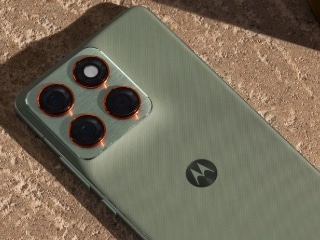- Home
- Science
- Science News
- Habitable Zone Explained: The ‘Goldilocks Zone’ Where Life Friendly Planets May Exist
Habitable Zone Explained: The ‘Goldilocks Zone’ Where Life-Friendly Planets May Exist
The habitable zone is where planets can sustain liquid water — and possibly life.

Photo Credit: NASA
Earth lies in the Sun’s “Goldilocks zone”, enabling water to remain liquid
The 'habitable zone', also known as the 'Goldilocks zone', is the area around a star where conditions are just right for liquid water to exist on a rocky planet. It's not too hot, not too cold. It is also key in the hunt for alien life, given that water is deemed necessary for life as we know it to evolve. This belt serves as a cosy home for our oceans, rivulets, and lakes in liquid form, thanks to Earth's placement within this zone. The discovery of other planets that orbit in this habitable zone, particularly ones that are made out of rock, is currently a high priority across the planet-searching community.
NASA Explains the Goldilocks Zone: Where Planets Can Sustain Liquid Water and Life
As per NASA explanations, if Earth were shifted higher and closer in the solar system where Mercury is, surface water would start to evaporate, eventually boiling away into a steam-heavy atmosphere. If we took the Earth out to Pluto, by contrast, a permanent deep freeze would turn oceans and much of the atmosphere solid. This zone lies at the not-too-cold, not-too-hot region around a star where it receives enough stellar energy to keep water in its liquid state without causing it all to evaporate in endless heat or freeze into unyielding ice — a width that extends outward or inward depending on the size and heat output of the star.
Goldilocks Zones: Actually, this is more commonly known as a Habitable Zone. And, of course, where exactly that is depends on what kind of star you mean — cool, low-luminosity stars live much closer to the Sun and at lower temperatures; hot, high-luminosity stars shove that zone way out. A team of scientists is on the hunt for authentic exoplanets in this region.
Water is important for life on Earth and natural cosmetics. Subglacial systems influence climate and geological processes. Water signatures are important atmospheric features for exoplanet-watchers, influencing habitable assessment.
In the future, missions will search for exoplanet atmospheres and examine “biosignature” and biosphere signatures — possibly from plants — to see if life exists on habitable worlds.
Get your daily dose of tech news, reviews, and insights, in under 80 characters on Gadgets 360 Turbo. Connect with fellow tech lovers on our Forum. Follow us on X, Facebook, WhatsApp, Threads and Google News for instant updates. Catch all the action on our YouTube channel.
Related Stories
- Samsung Galaxy Unpacked 2025
- ChatGPT
- Redmi Note 14 Pro+
- iPhone 16
- Apple Vision Pro
- Oneplus 12
- OnePlus Nord CE 3 Lite 5G
- iPhone 13
- Xiaomi 14 Pro
- Oppo Find N3
- Tecno Spark Go (2023)
- Realme V30
- Best Phones Under 25000
- Samsung Galaxy S24 Series
- Cryptocurrency
- iQoo 12
- Samsung Galaxy S24 Ultra
- Giottus
- Samsung Galaxy Z Flip 5
- Apple 'Scary Fast'
- Housefull 5
- GoPro Hero 12 Black Review
- Invincible Season 2
- JioGlass
- HD Ready TV
- Laptop Under 50000
- Smartwatch Under 10000
- Latest Mobile Phones
- Compare Phones
- Redmi Note 15 5G
- Redmi Note 15 Pro 5G
- Redmi Note 15 Pro+ 5G
- Lava Play Max
- Poco C85 5G
- Honor Magic 8 Lite
- Jolla Phone
- Realme P4x 5G
- Asus ProArt P16
- MacBook Pro 14-inch (M5, 2025)
- OnePlus Pad Go 2
- Poco Pad M1
- Just Corseca Skywatch Pro
- Honor Watch X5
- Acerpure Nitro Z Series 100-inch QLED TV
- Samsung 43 Inch LED Ultra HD (4K) Smart TV (UA43UE81AFULXL)
- Asus ROG Ally
- Nintendo Switch Lite
- Haier 1.6 Ton 5 Star Inverter Split AC (HSU19G-MZAID5BN-INV)
- Haier 1.6 Ton 5 Star Inverter Split AC (HSU19G-MZAIM5BN-INV)

















